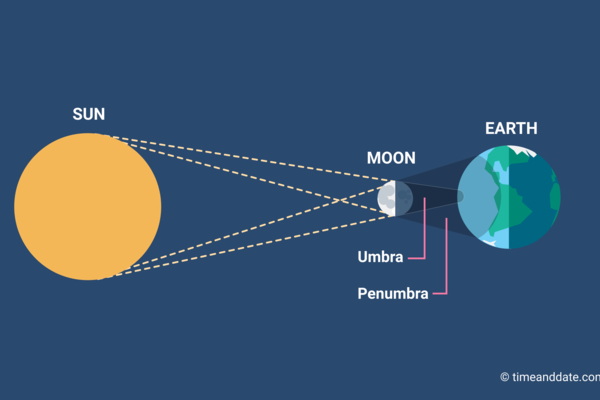A Guide to Total Solar Eclipse Today

On Monday, April 8, the sky will momentarily darken in many parts of the world which will be in the path of totality during the 2024 solar eclipse. India’s solar probe Aditya L1 will track the behavior and rays of the Sun during the total solar eclipse.
An eclipse happens when a planet or a moon gets in the way of the Sun’s light. Here on Earth, we can experience two kinds of eclipses: solar eclipses and lunar eclipses.
A solar eclipse occurs when the moon passes in a direct line between the Earth and the sun. The moon’s shadow travels over the Earth’s surface and blocks out the sun’s light as seen from Earth. A solar eclipse happens when, at just the right moment, the moon passes between the sun and Earth. Sometimes the moon only blocks part of the sun’s light. This is called a partial solar eclipse.
Other times, the moon blocks all of the sun’s light. This is called a total solar eclipse. As the moon blocks the sun’s light, it casts a shadow on part of the Earth.
The moon’s shadow creates a trail as Earth rotates. This trail is called the path of totality. If you want to experience total darkness during an eclipse, you have to be in the path of totality.
The moon’s shadow has two parts: a central region (umbra) and an outer region (penumbra). Depending upon which part of the shadow passes over you, you will see one of three types of solar eclipses:
- Total – The entire central portion of the sun is blocked out.
- Partial – Only part of the sun’s surface is blocked out.
- Annular – Only a small, ring-like sliver of light is seen from the sun’s disc.
If the umbra passes over you, the entire central portion of the sun will be blocked out. You will see a total solar eclipse, and the sky will darken as if it were nighttime. During a total solar eclipse, you can see the sun’s outer atmosphere, called the corona. This is the only time that you can see the corona, which is why astronomers get so excited when a total eclipse is about to occur. Many astronomers travel the world chasing eclipses.
If the penumbra passes over you, only part of the sun’s surface will be blocked out. You will see a partial solar eclipse, and the sky may dim slightly depending on how much of the sun’s disc is covered.
In some cases, the moon is far enough away in its orbit that the umbra never reaches the Earth at all. In this case, there is no region of totality, and what you see is an annular solar eclipse. In an annular eclipse, only a small, ring-like sliver of light is seen from the sun’s disc (“annular” means “of a ring”).
Lunar Eclipse
During a lunar eclipse, Earth gets in the way of the sun’s light hitting the moon. That means that during the night, a full moon fades away as Earth’s shadow covers it up.
The moon can also look reddish because Earth’s atmosphere absorbs the other colors while it bends some sunlight toward the moon. Sunlight bending through the atmosphere and absorbing other colors is also why sunsets are orange and red.







0 Comments